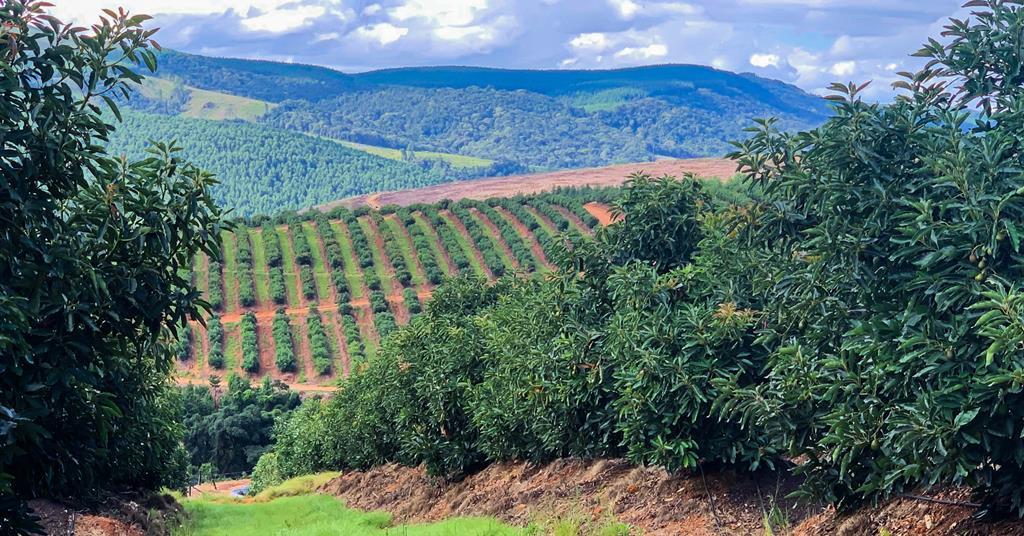Semillas Fitó wins Retina ECO Award – Fruitnet

Report on an Innovative Methodology for Measuring the Ecological Footprint of Vegetable Varieties
Executive Summary
A new methodology developed by Semillas Fitó provides a scientific framework for quantifying the environmental impact of vegetable varieties, directly supporting the achievement of multiple Sustainable Development Goals (SDGs). By measuring key ecological indicators, this innovation enables the agricultural sector to make data-driven decisions that promote environmental stewardship, enhance food security, and combat climate change. The project has demonstrated significant reductions in resource consumption and carbon emissions, offering a scalable solution for the global agri-food chain.
Pioneering a Standard for Sustainable Agriculture
Methodology and Alignment with SDG 12: Responsible Consumption and Production
Semillas Fitó, in collaboration with the Institut Cerdà, has engineered a pioneering methodology to measure the ecological footprint at the vegetable varietal level. This initiative is a direct response to the objectives of SDG 12 (Responsible Consumption and Production) by creating a tool to scientifically quantify and manage the environmental impact of food production. The methodology is designed in accordance with the European Commission’s Product Environmental Footprint (PEF) principles, aiming to establish a validated European standard for the horticultural sector.
Key Indicators for Measuring Progress Towards SDGs
The methodology assesses environmental performance through five critical indicators, each corresponding to specific Sustainable Development Goals:
- Carbon Footprint: Directly addresses SDG 13 (Climate Action) by measuring greenhouse gas emissions.
- Water Footprint: Supports SDG 6 (Clean Water and Sanitation) by quantifying water use efficiency.
- Energy Footprint: Contributes to SDG 7 (Affordable and Clean Energy) by tracking energy consumption in the crop cycle.
- Land Use Footprint: Aligns with SDG 15 (Life on Land) by evaluating the efficiency of land resource utilization.
- Resource Use Footprint: Measures the consumption of fertilisers and phytosanitary products, advancing goals within SDG 12 and SDG 15 by promoting reduced chemical inputs.
Quantifiable Impact on Global Sustainability Goals
Demonstrated Reductions and Contribution to SDG 2: Zero Hunger
Initial results from applying the methodology to new, more efficient vegetable varieties show substantial environmental gains. These advancements contribute to SDG 2 (Zero Hunger) by improving crop resilience and yield efficiency.
- A reduction of 10-12% in the overall ecological footprint per tonne produced has been recorded for varieties like the Nelto pepper.
- The Augusto aubergine rootstock achieved a notable 27% reduction in its resource use footprint (fertilisers, etc.), directly impacting SDG 15.
Scalable Impact on Climate Action (SDG 13)
The application of these sustainable varieties presents a significant opportunity for global climate change mitigation. The potential CO₂ reductions illustrate a powerful contribution to SDG 13 (Climate Action).
- In Murcia, Spain, the adoption of more sustainable pepper varieties could lead to an annual reduction of 2,080 tonnes of CO₂ equivalent.
- Extrapolated globally, integrating these new varieties into major production areas could prevent over 460 million tonnes of CO₂ equivalent from being emitted.
Strategic Implementation and Partnerships for the Goals (SDG 17)
Fostering Industry-Wide Innovation and Collaboration
This project exemplifies SDG 17 (Partnerships for the Goals) through its collaborative development and its commitment to open access. By seeking official validation from the International Seed Federation and making the tool available to the entire agri-food sector, Semillas Fitó aims to drive systemic change and establish a new benchmark for sustainability, in line with SDG 9 (Industry, Innovation, and Infrastructure).
Empowering Farmers with Sustainable and Profitable Solutions
The genetically efficient varieties provide tangible benefits to farmers, creating a business case for sustainability that supports rural livelihoods and food security (SDG 2). The primary advantages include:
- Improved Profitability: Optimizing resource use translates directly into lower operational costs and greater economic stability.
- Reduced Risk: Enhanced efficiency provides a buffer against the volatility of input prices and market pressures.
- Enhanced Adaptation: The varieties help farmers adapt to an increasingly demanding regulatory and environmental landscape.
- Resource Optimization: The genetic design minimizes the required inputs of water, energy, and agrochemicals, promoting responsible production in line with SDG 6, SDG 12, and SDG 15.
Analysis of SDGs, Targets, and Indicators
1. Which SDGs are addressed or connected to the issues highlighted in the article?
-
SDG 2: Zero Hunger
The article focuses on developing new, more efficient vegetable varieties. This directly relates to improving agricultural productivity and ensuring sustainable food production systems, which are central to achieving Zero Hunger.
-
SDG 9: Industry, Innovation, and Infrastructure
The core of the article is the development of a “pioneering methodology” and a new “tool” by Semillas Fitó. This represents a significant innovation in the agri-food sector, aiming to create a new European standard for measuring sustainability. This aligns with the goal of promoting inclusive and sustainable industrialization and fostering innovation.
-
SDG 12: Responsible Consumption and Production
The methodology is explicitly designed to measure and reduce the environmental impact of vegetable production. It quantifies the “ecological footprint” through various indicators, promoting more sustainable production patterns and the efficient use of natural resources.
-
SDG 13: Climate Action
A key indicator measured by the new methodology is the “carbon footprint.” The article highlights the potential for “an estimated potential annual reduction of 2,080 tonnes of CO2 equivalent” in a specific region, directly addressing the need to combat climate change and its impacts.
-
SDG 15: Life on Land
The methodology includes measuring the “land use footprint” and the “resource use footprint,” which covers phytosanitary products and fertilizers. Reducing these footprints helps protect terrestrial ecosystems and improve land quality, which is a key aspect of this goal.
2. What specific targets under those SDGs can be identified based on the article’s content?
-
Target 2.4
“By 2030, ensure sustainable food production systems and implement resilient agricultural practices that increase productivity and production…” The development of vegetable varieties that are more efficient and have a lower ecological footprint directly contributes to creating more sustainable food production systems.
-
Target 9.5
“Enhance scientific research, upgrade the technological capabilities of industrial sectors… encouraging innovation…” The article describes how Semillas Fitó engaged in scientific development (“developed in collaboration with the Institut Cerdà”) to create a new methodology, which is a clear example of enhancing research and technological capabilities within the agricultural industry.
-
Target 12.2
“By 2030, achieve the sustainable management and efficient use of natural resources.” The project’s goal is to scientifically quantify and reduce the use of key resources. The article states that the new varieties “could optimise the use of essential resources such as water, energy, and agrochemical inputs.”
-
Target 12.4
“By 2020, achieve the environmentally sound management of chemicals and all wastes… and significantly reduce their release to air, water and soil…” The methodology specifically measures the “resource use footprint (phytosanitary products, fertilisers, and disinfectants),” aiming to reduce the use of these chemicals in agriculture.
-
Target 13.2
“Integrate climate change measures into national policies, strategies and planning.” While not a national policy, the tool is designed to be a standard for the “entire agri-food sector” and is being submitted for “official validation by Brussels.” This represents an integration of climate change measures (reducing CO2 emissions) into industry-level strategies.
3. Are there any indicators mentioned or implied in the article that can be used to measure progress towards the identified targets?
Yes, the article explicitly mentions the five key indicators developed by Semillas Fitó to measure the ecological footprint of their vegetable varieties. These are direct measures of progress.
- Carbon footprint: The article quantifies this with a potential reduction of “2,080 tonnes of CO2 equivalent” and a global potential of “more than 460mn tonnes of CO₂ equivalent.”
- Water footprint: This is mentioned as one of the five key indicators used to quantify the environmental impact.
- Energy footprint: This is also listed as one of the five key indicators.
- Land use footprint: This is another of the five key indicators measured by the methodology.
- Resource use footprint: This is explicitly defined in the article as covering “(phytosanitary products, fertilisers, and disinfectants).” The article notes a “27 per cent” reduction in this footprint for a specific variety.
4. Summary Table of SDGs, Targets, and Indicators
| SDGs | Targets | Indicators |
|---|---|---|
| SDG 2: Zero Hunger | 2.4: Ensure sustainable food production systems and implement resilient agricultural practices. | Increased efficiency per tonne produced (e.g., reductions of 10-12%). |
| SDG 9: Industry, Innovation, and Infrastructure | 9.5: Enhance scientific research and upgrade technological capabilities to encourage innovation. | Development of a new methodology for calculating the ecological footprint of vegetable crops; submission for validation as a European standard. |
| SDG 12: Responsible Consumption and Production | 12.2: Achieve the sustainable management and efficient use of natural resources. 12.4: Achieve the environmentally sound management of chemicals. |
– Water footprint – Energy footprint – Land use footprint – Resource use footprint (phytosanitary products, fertilizers, disinfectants), with measured reductions (e.g., 27%). |
| SDG 13: Climate Action | 13.2: Integrate climate change measures into policies and strategies. | Carbon footprint, measured in tonnes of CO2 equivalent avoided (e.g., 2,080 tonnes annually in Murcia). |
| SDG 15: Life on Land | 15.3: Combat desertification, restore degraded land and soil. | – Land use footprint – Reduction in the use of agrochemicals (measured by the resource use footprint). |
Source: fruitnet.com

What is Your Reaction?
 Like
0
Like
0
 Dislike
0
Dislike
0
 Love
0
Love
0
 Funny
0
Funny
0
 Angry
0
Angry
0
 Sad
0
Sad
0
 Wow
0
Wow
0
























;Resize=805#)























































